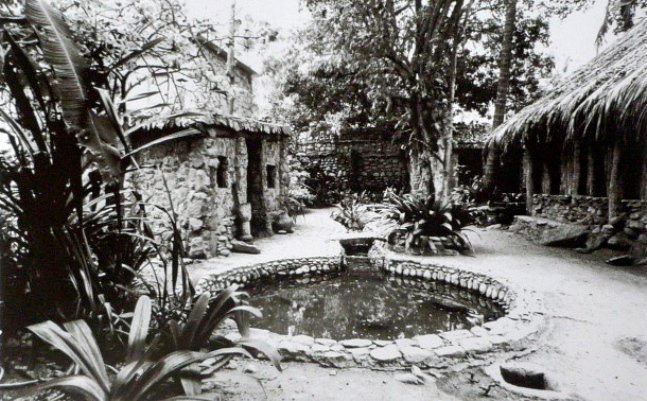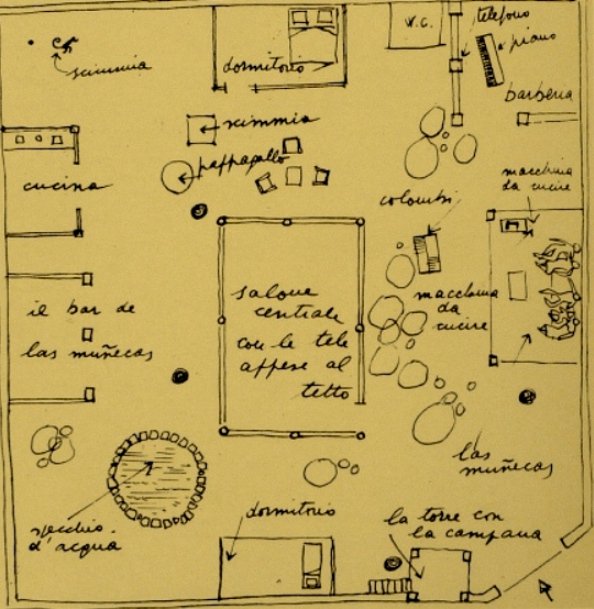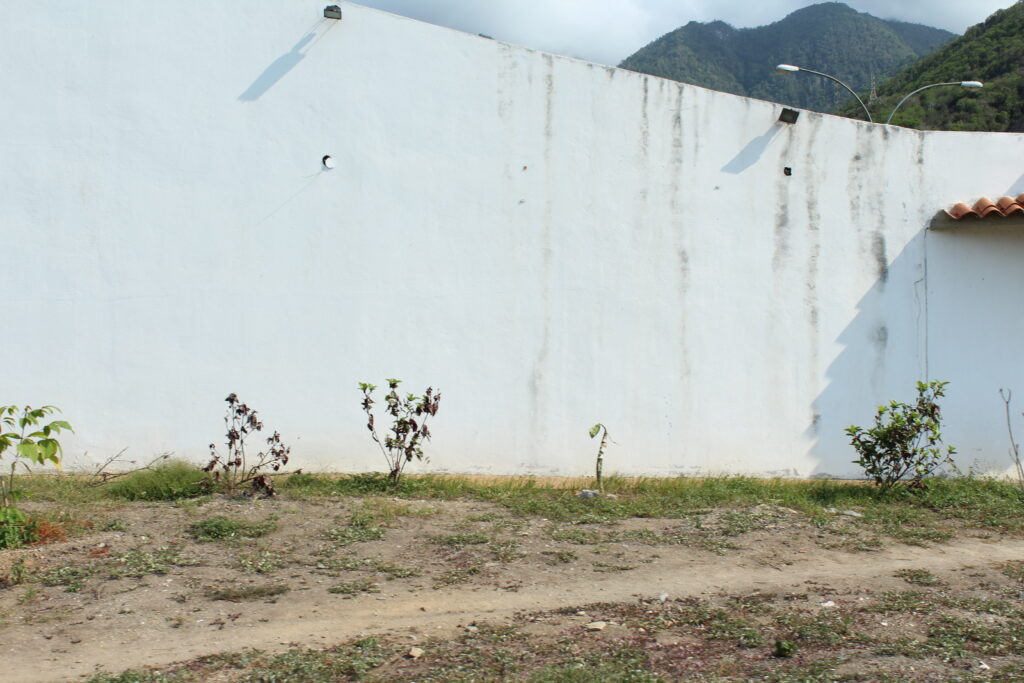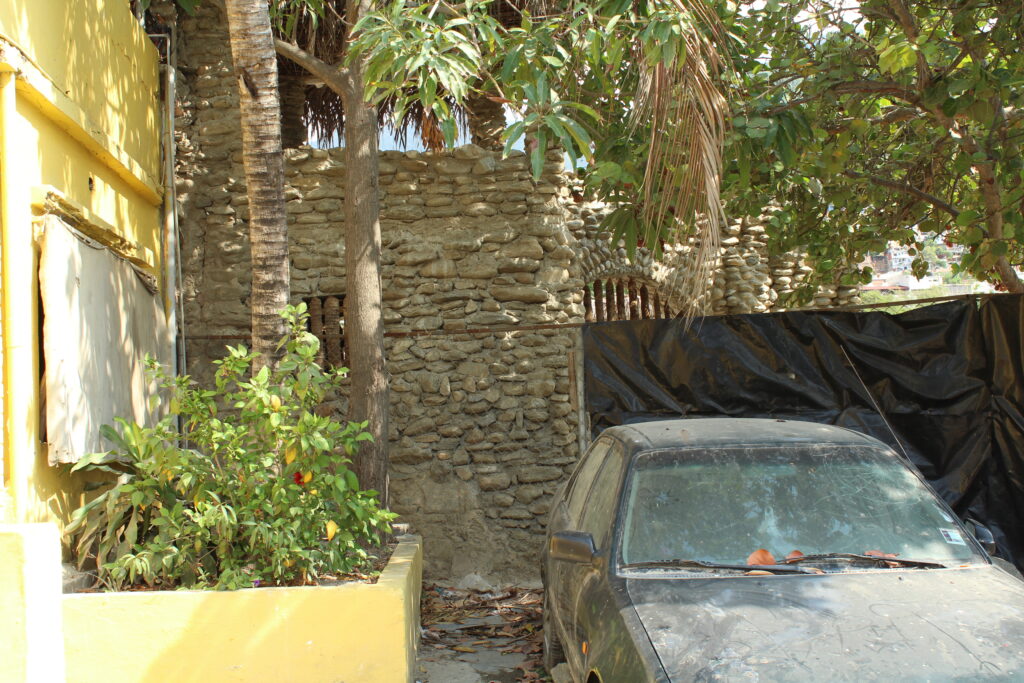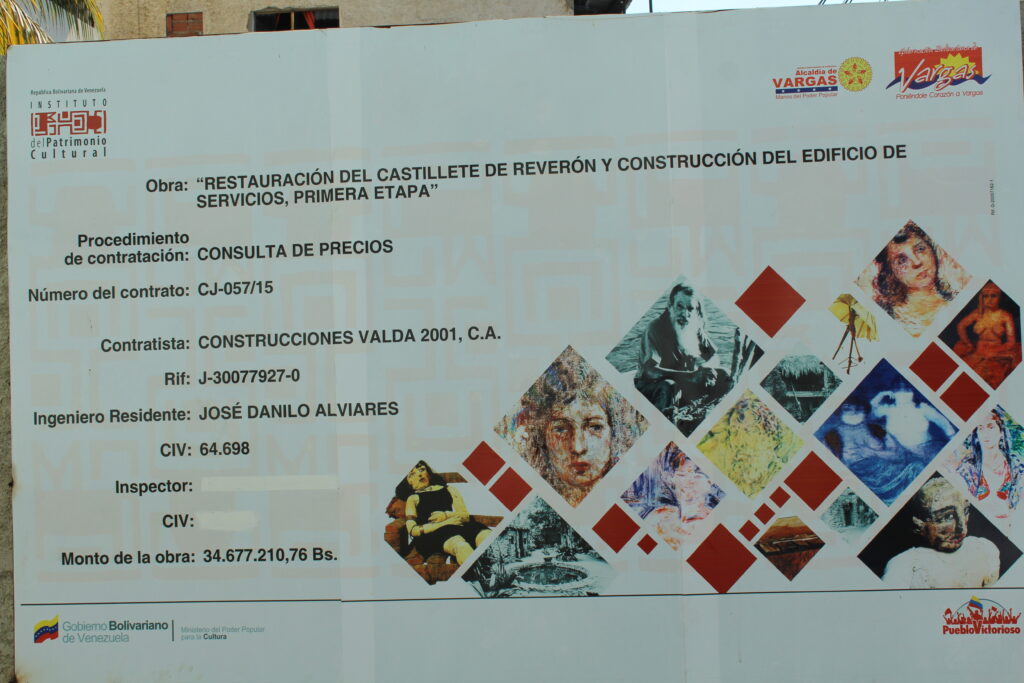El Castillete was the home and workplace of Armando Reverón, the Venezuelan painter and sculptor who moved from Caracas to Macuto in 1921. There, he designed the small complex, pictured below, that he built with materials sourced locally. It featured a bell tower, a pond, a human-sized dolls’ house, and space for his pet parrot and monkey. You can find out more about Reverón by visiting an interactive exhibition of his work that was hosted in 2007 at MoMA.
Ten years after Reverón’s death in 1954, El Castillete acquired legal status as a museum. It was to become an important site of tangible national heritage, and would represent a source of pride and affection for Macuto residents. Still, over the course of the following four decades, it was exposed periodically to fire, urbanization, and neglect. Finally, in 1999, much of the building was swept to sea by the landslides.
This catastrophic event prompted the community to organize and save the remains of the site, and to protect the collective memory that was housed by El Castillete. Desiree Domec has written about the process of their organization, and their complex interactions with the state, in a book chapter that documents how a grassroots project that set out to conserve was transformed by a political desire to reconstruct.
When we visited El Castillete in 2016, the Ministry-led reconstruction project was nearing its completion. We were unable to enter the site, but a video produced by the Instituto del Patrimonio Cultural six months later offers a glimpse of what we might have seen.
